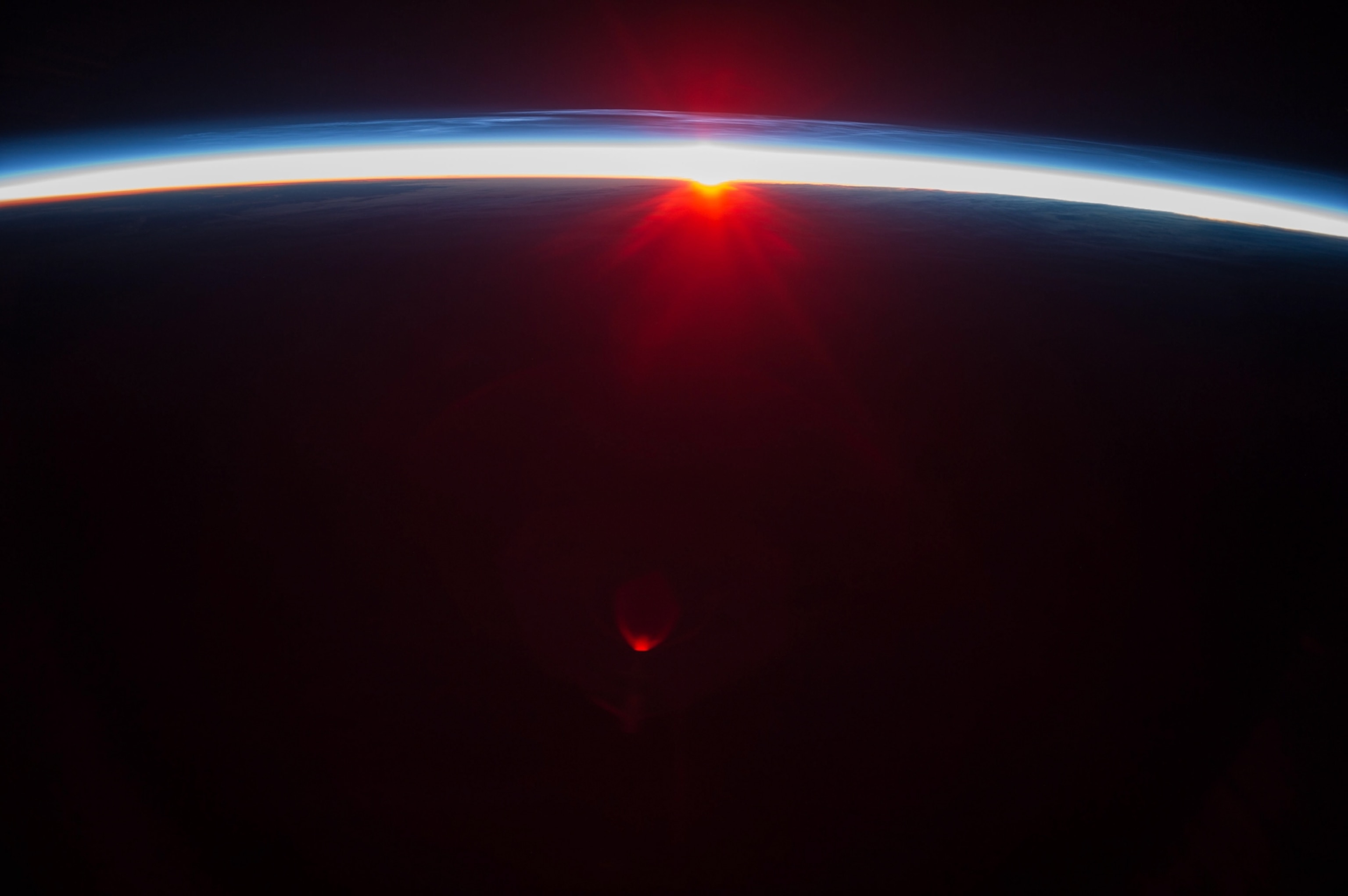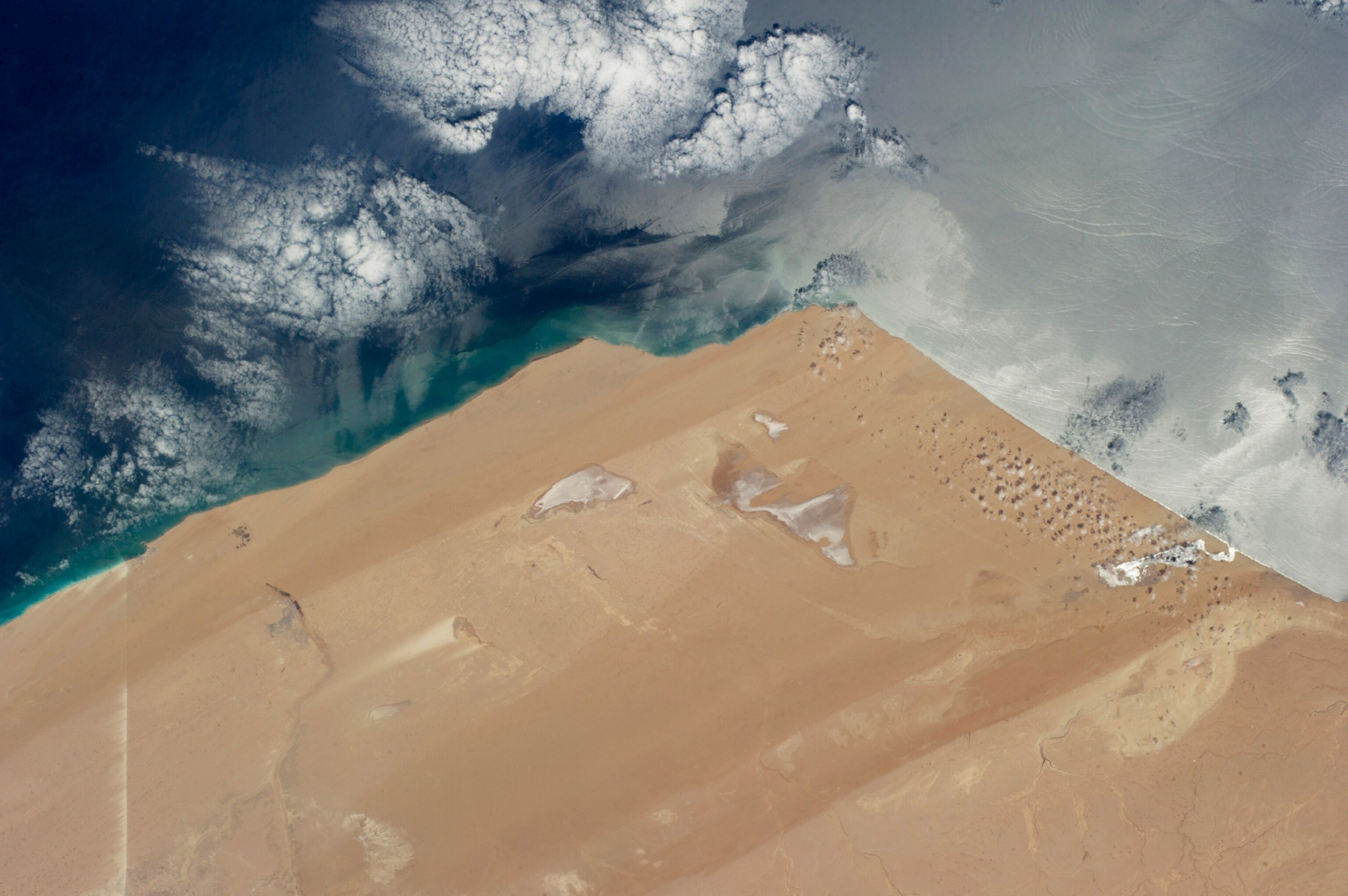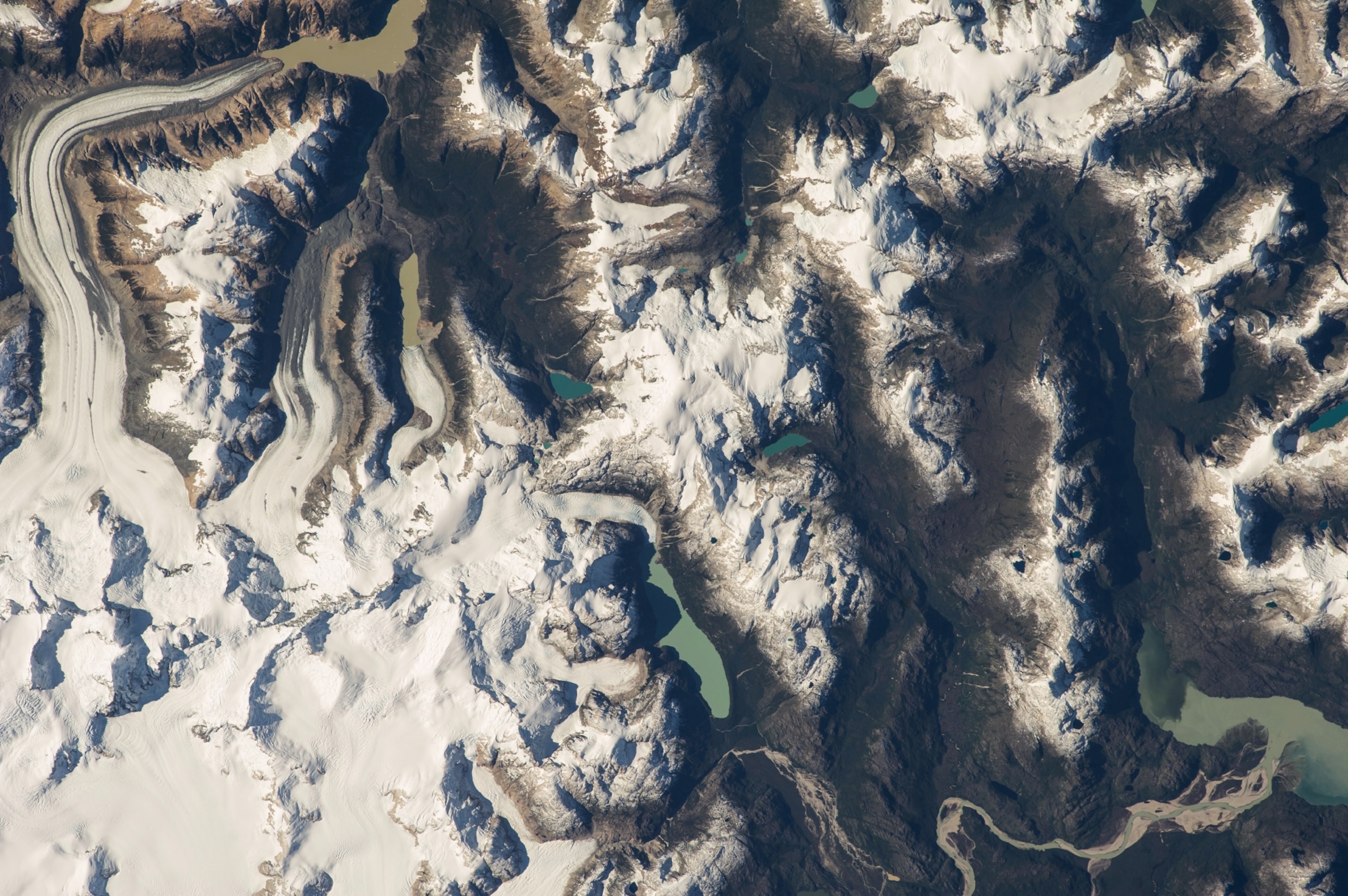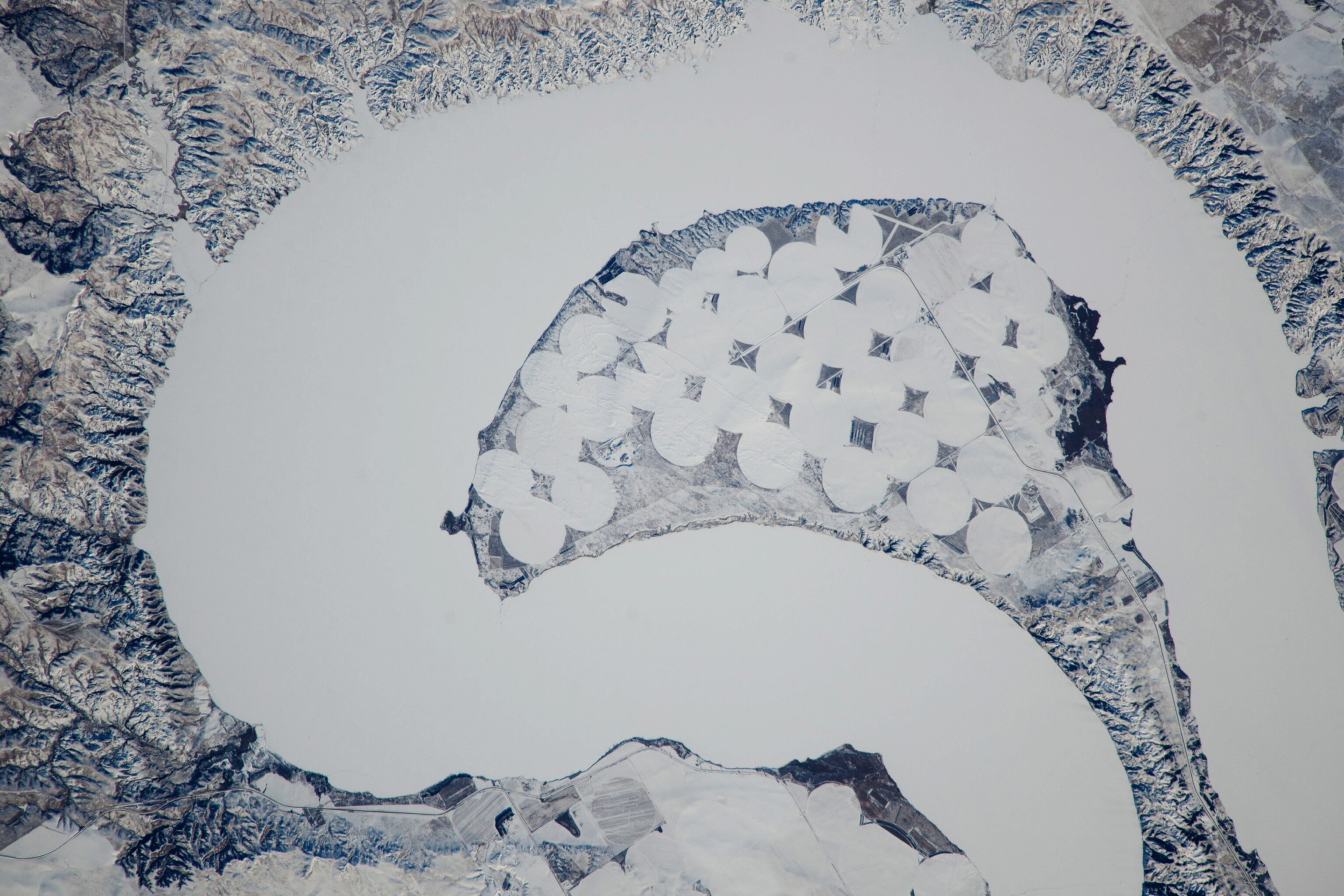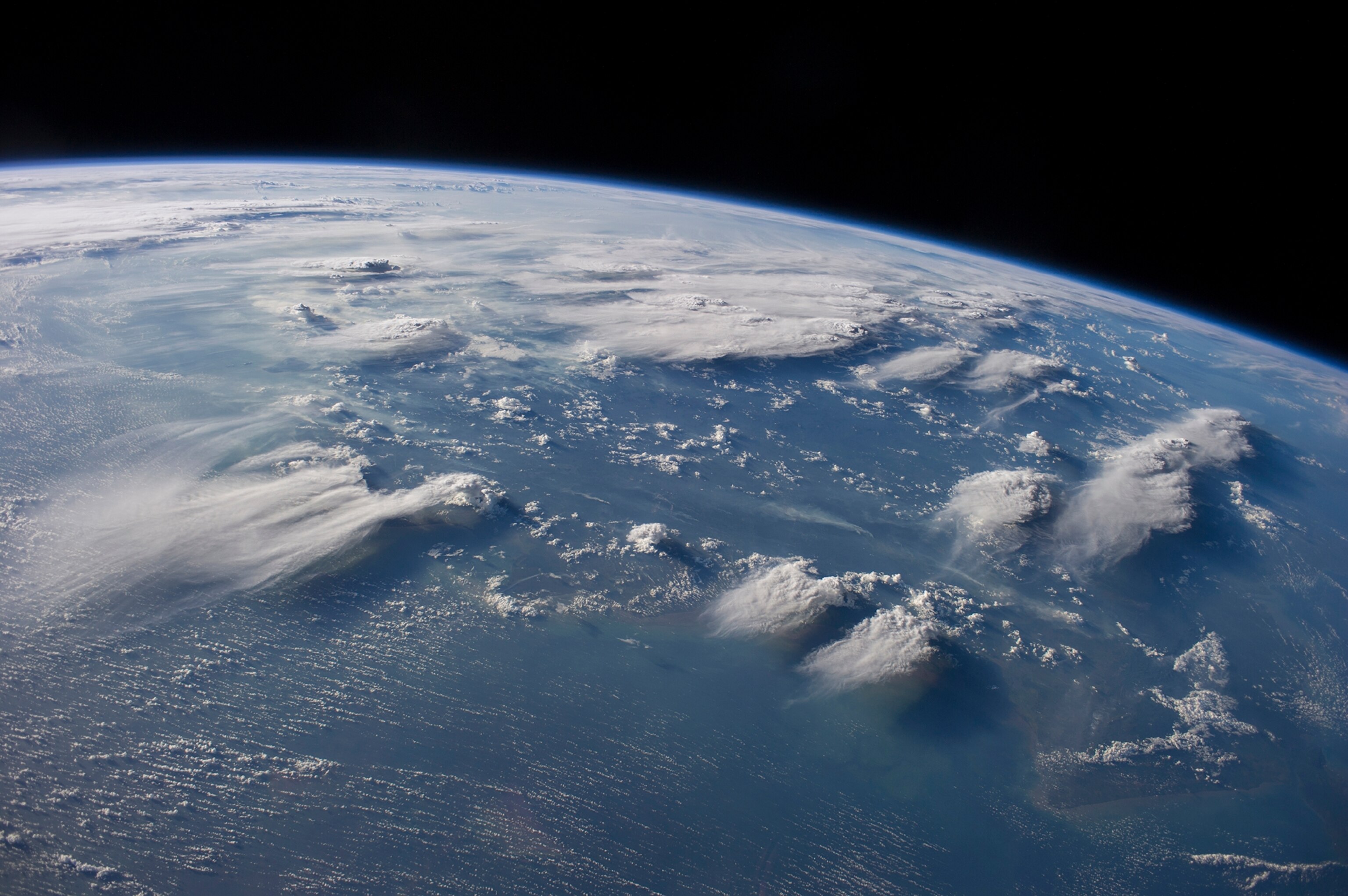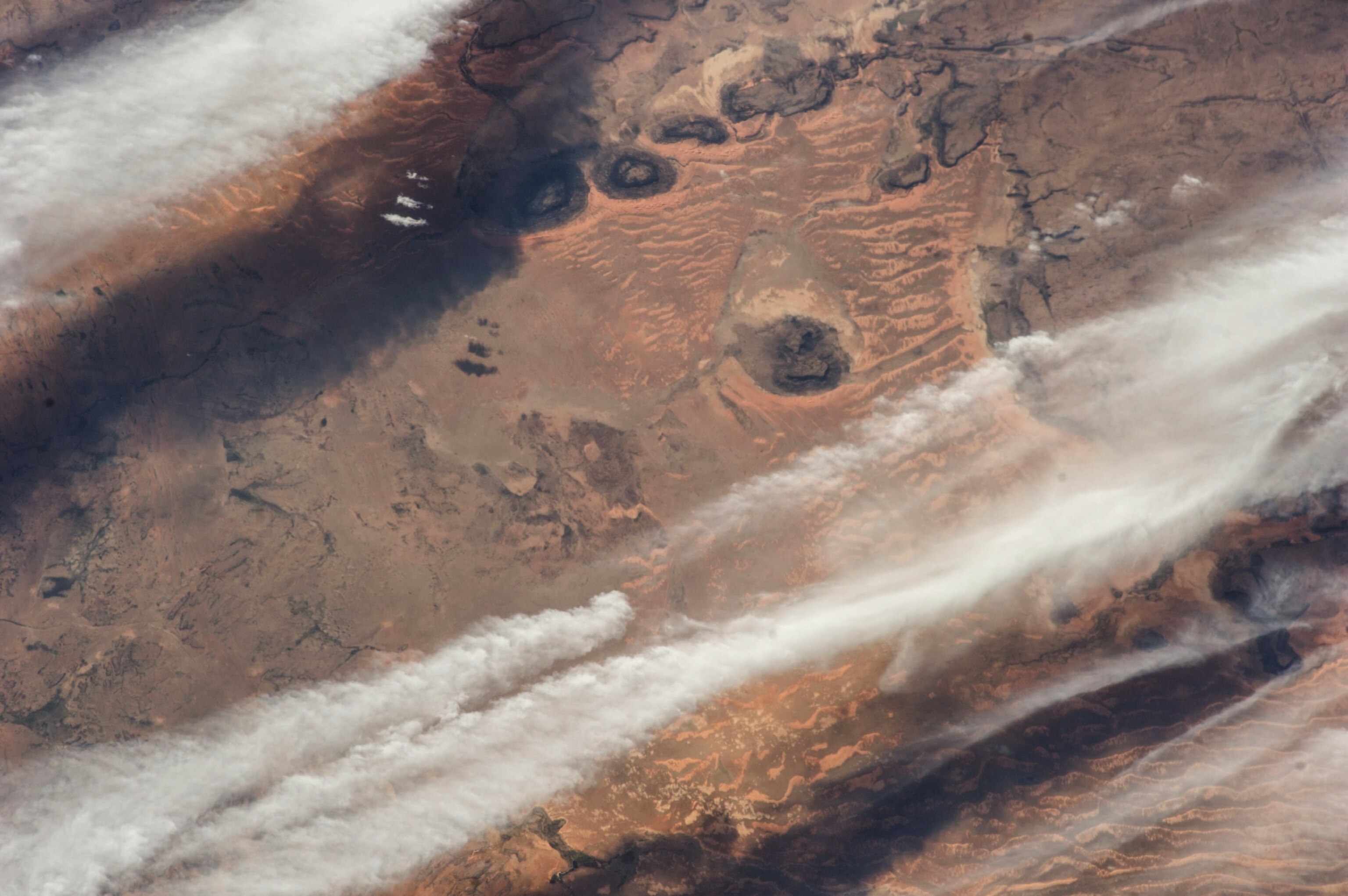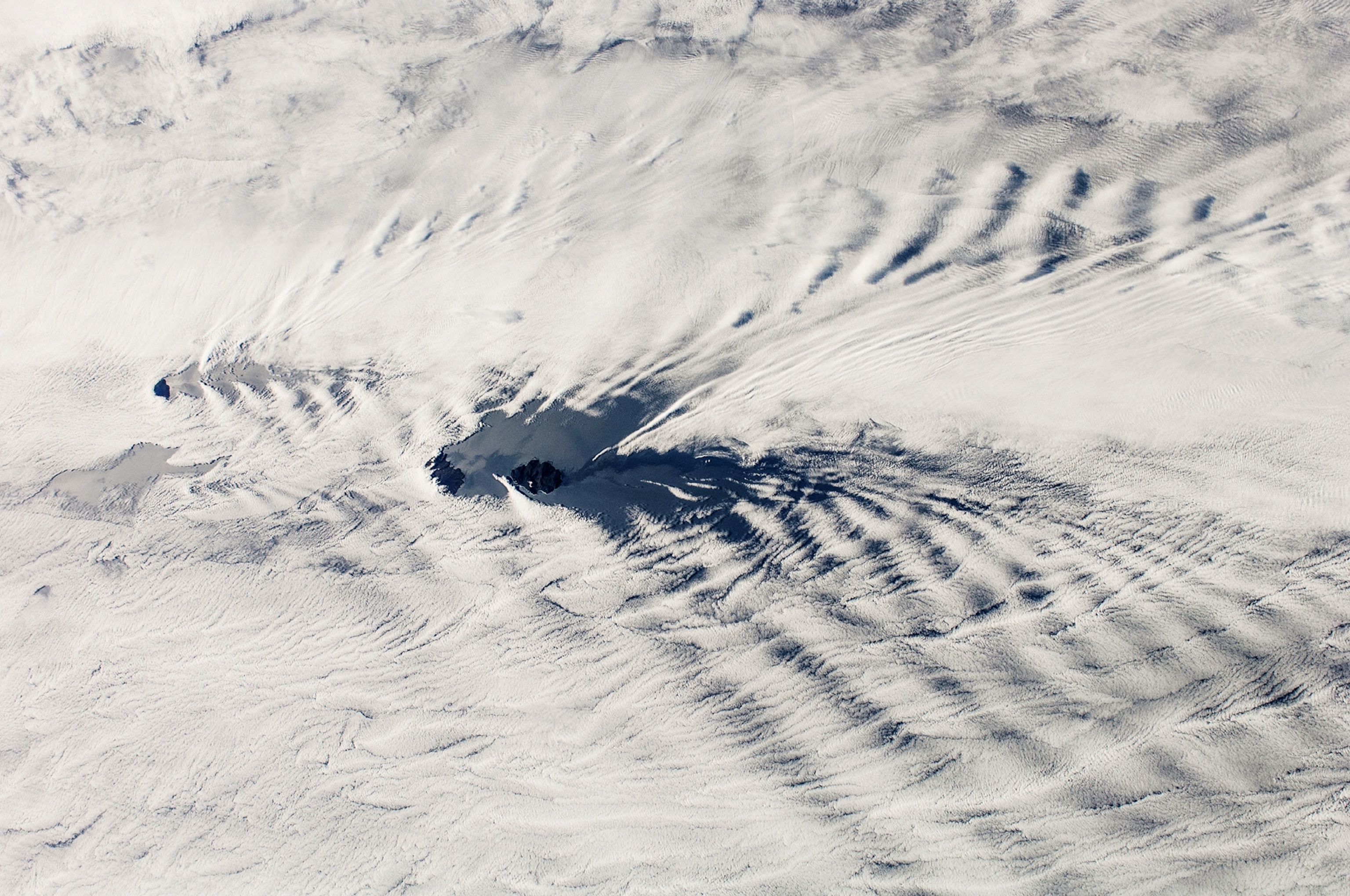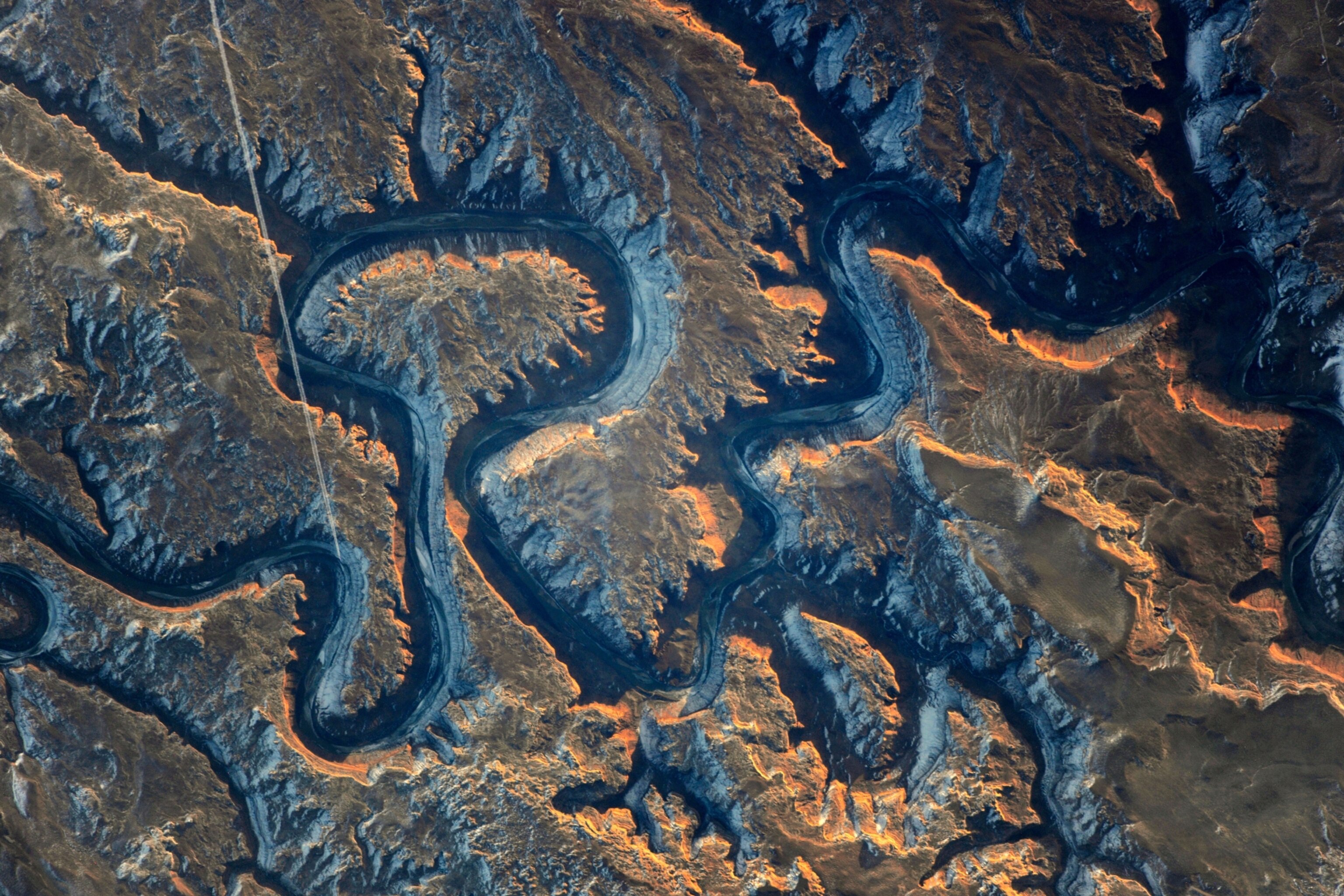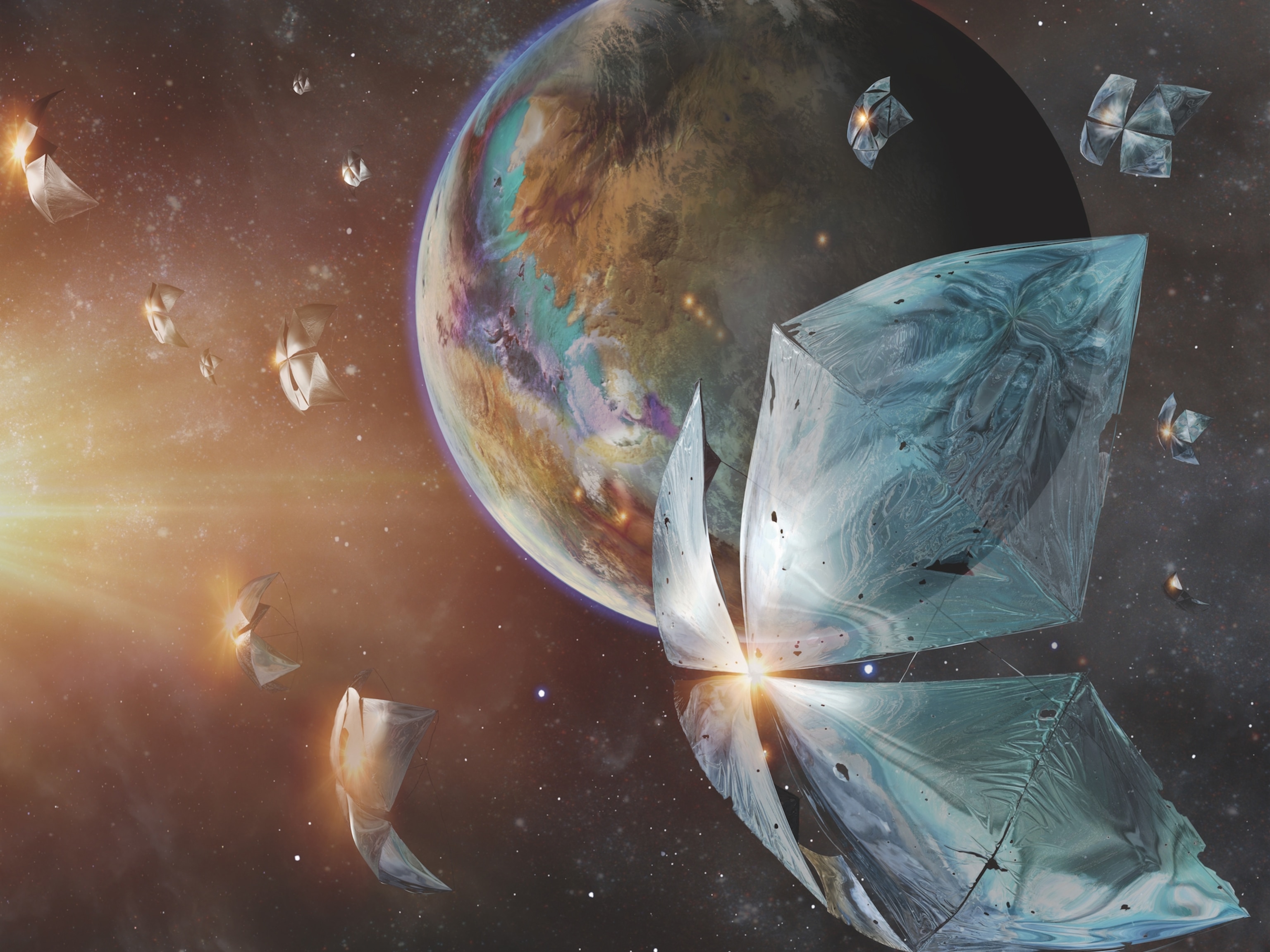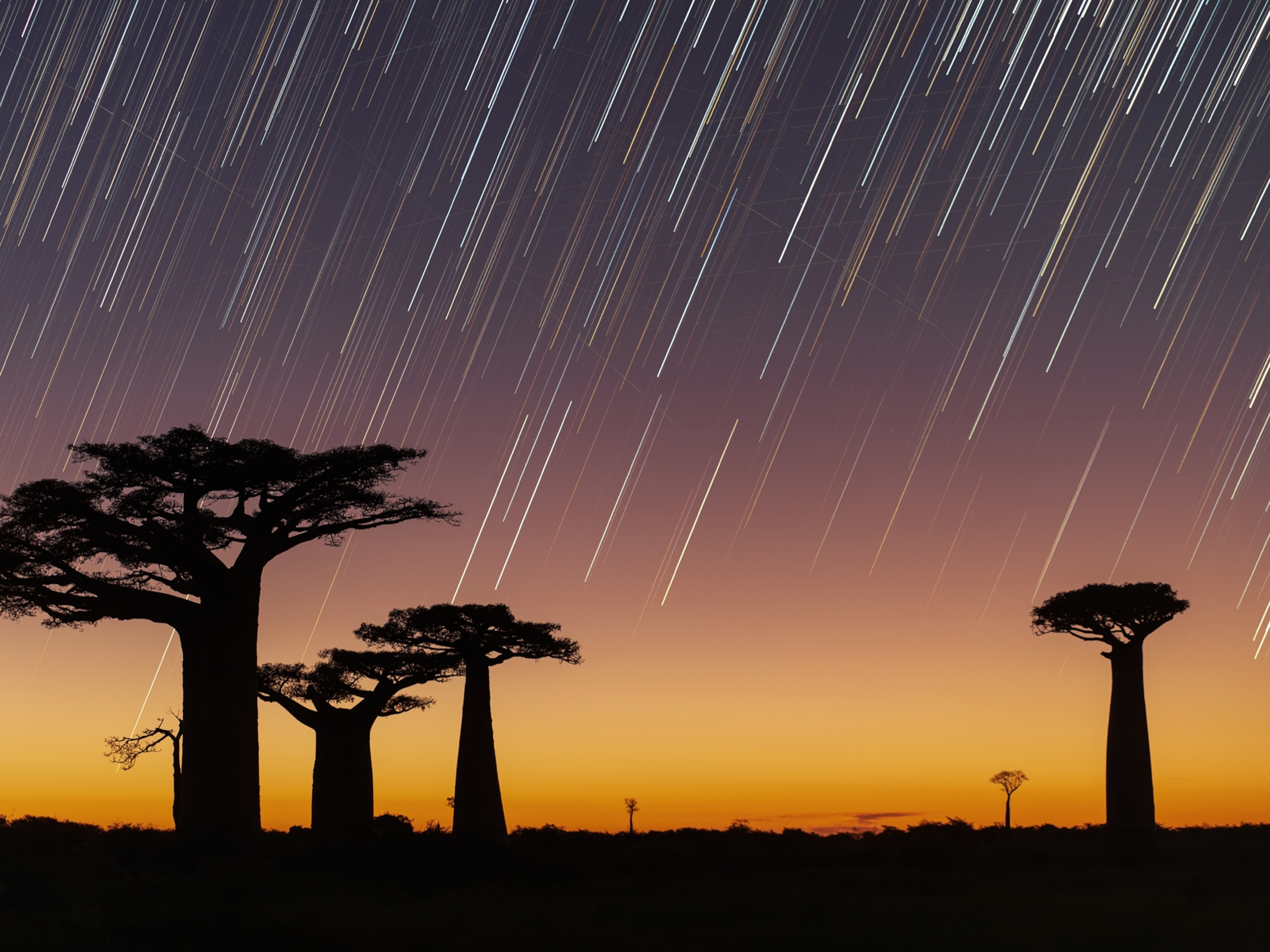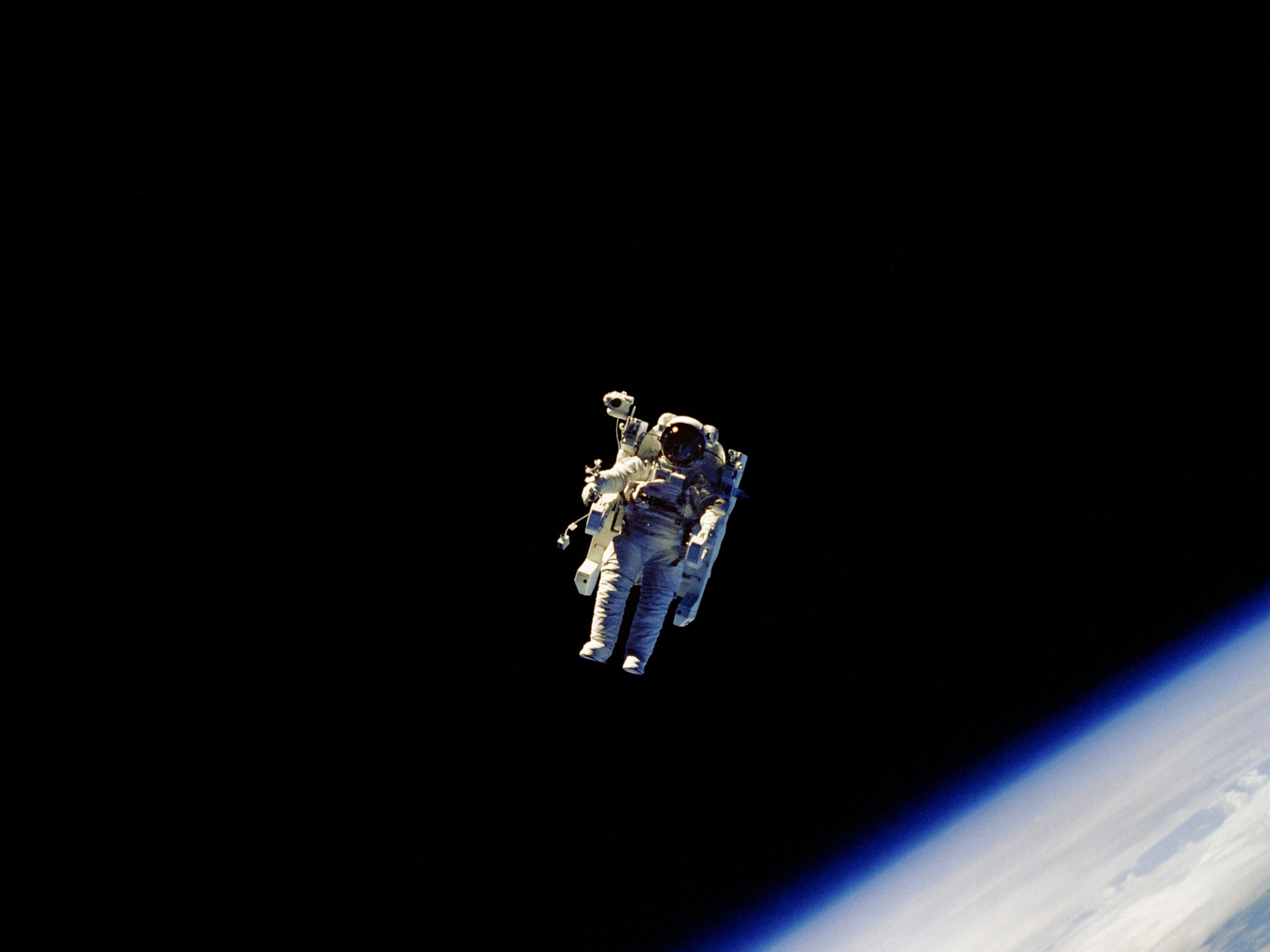"There are strange things done in the midnight sun," Canadian poet Robert Service wrote in 1907. Above, astronauts witnessed the phenomena firsthand from the International Space Station, which orbits roughly 205 miles (330 kilometers) above the Earth's surface.Astronauts made the image looking north across the Aleutian Islands, 20 minutes after local midnight in early August 2013. The space station was in its "top of the orbit," according to NASA, the northernmost latitude it reaches (51.6 degrees north). The Aleutian Islands are not visible on the dark side of the day-night line.
The thin clouds above the midnight sun are known as noctilucent clouds (night-shining clouds) or polar mesospheric clouds, since they occur over the poles during the summer. Astronauts describe them as among the most beautiful sights from space. According to NASA, data suggest the clouds may be getting brighter and appearing at lower latitudes as a result of global warming.
This photo and those that follow were all made by astronauts from the International Space Station since last year. The station launched in 1998 and is a project of five international space agencies, in the United States, Russia, Canada, Japan, and Europe. The station supports a crew of up to six people and has orbited the Earth more than 90,000 times, playing host to wide variety of scientific experiments and observations. (See more space station photos.)
—By Brian Clark Howard, photo gallery by Kurt Mutchler
